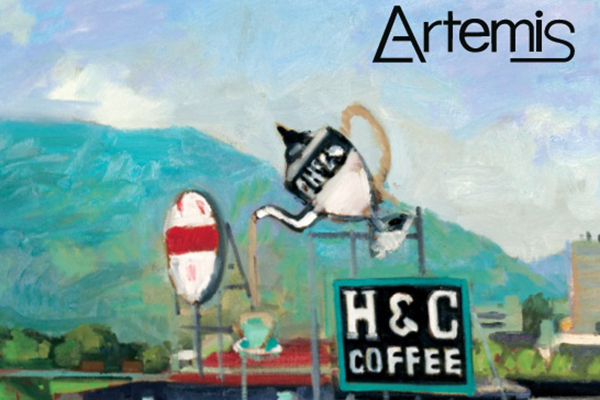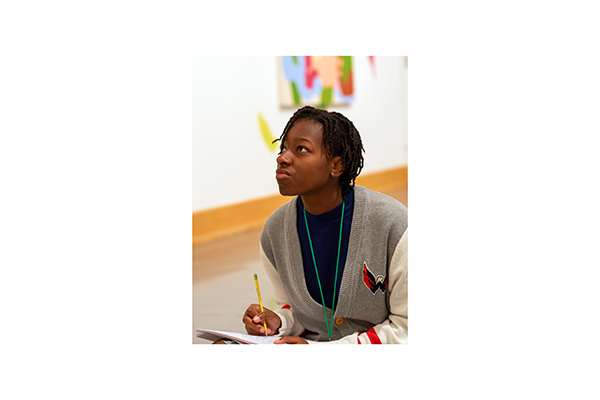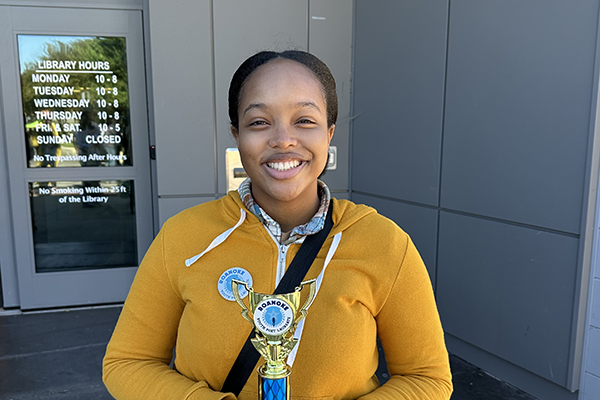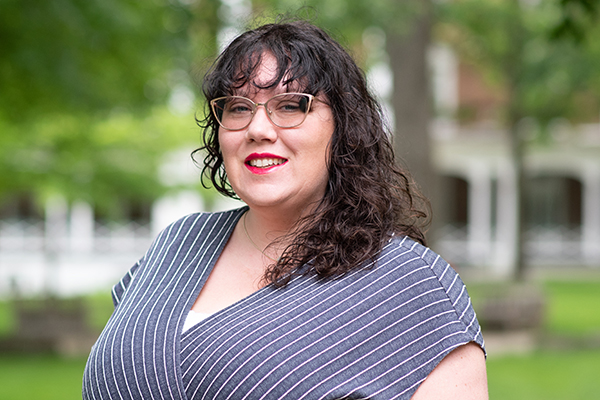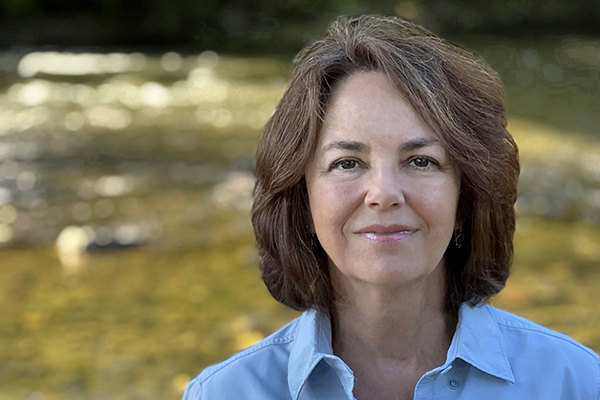Few publications have celebrated the prodigious talents of Southwest Virginia writers and artists as Artemis.
For the better part of four decades, the literary journal, published annually, has showcased compelling new voices in tandem with notable authors that have ranged from poet laureates to Pulitzer Prize and other major award winners and nominees. The rich history of creativity at Hollins University in the written word and other artistic expression has played an integral role in the success and perseverance of Artemis: Through the years, over 140 Hollins writers and artists, including more than 90 students and 40 professors, have been featured contributors, or have donated their time and expertise as board members for the all-volunteer operation.
“Without Hollins and the direction it provided, Artemis would not have lasted,” says editor and founder Jeri Rogers, who herself is a Hollins alumna, having earned her Master of Arts in Liberal Studies in 1991.
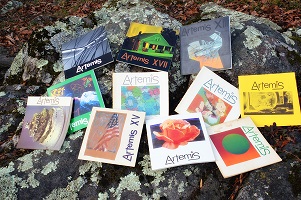
Artemis began in 1977 while Rogers was serving as director of the Women’s Resource Center in Roanoke, sponsored by Total Action Against Poverty (now Total Action for Progress). “I had gotten a grant to do a photographic study of women and in the process found that a lot of my subjects were writers. At the same time, one of the biggest problems I saw at the center was women who had suffered from abuse. That’s a really tough subject to deal with because poverty, drug and alcohol abuse, and homelessness are also involved. It was so upsetting and sad to see this, but I thought, ‘What can we do to help move this forward?’ So, I started a writing workshop for abused women.”
The first workshop, which was run “with the help of some of Hollins’ best writers,” she says, generated “amazing results.” Rogers was inspired to launch a new literary journal that she named Artemis after the lunar goddess. “I pitched the idea and my supervisors were like, ‘go for it, we’ll get some money for you.’ That was how it started and it was such a great vehicle because it published some of the writings of these women and talked about the work we were doing at the center.”
Poems and short stories by Hollins students and professors appeared as well in the debut issue of Artemis, and over the years, contributions from acclaimed Hollins authors such as Professor of English Jeanne Larsen M.A. ’72, Professor of English Cathryn Hankla ’80, M.A. ’82, and Beth Macy M.A. ’93, and artists including Professor of Art Emeritus Bill White and Betty Branch ’79, M.A.L.S. ’87, have been published. Well into the 1980s, Hollins faculty writers including Amanda Cockrell ’69, M.A. ’88 (founding director of Hollins’ graduate programs in children’s literature), Thorpe Moeckel (associate professor of English), and Professor of English Eric Trethewey (who passed away in 2014) continued to play a prominent role in the writing workshops. Rogers notes that “[Professor of English] Richard Dillard got involved early on, and thanks to him, every issue of Artemis is now part of Special Collections at Hollins’ Wyndham Robertson Library.”
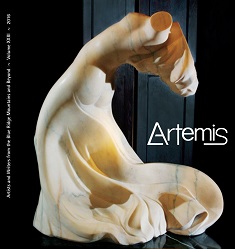
The first 20-plus years of the journal’s existence were gratifying yet exhausting for Rogers and her volunteers. During the same time period she was raising three children and working as a professional photographer. Artemis went dormant in 2000 for more than ten years, but its concept and mission never diminished. “There were a number of us who missed it,” Rogers recalls, “and we decided to resurrect it in 2014” with one caveat: “We’ve gotta keep it small.” Today, the Artemis staff features Rogers and just six other volunteers, and she’s emphasized recruiting younger people to ensure the journal continues for years to come.
Rogers admits that producing a “beautifully printed, perfect-bound,” 200-page volume in the digital age “is a challenge. It’s pushing that boulder up that hill. But we don’t give up. There’s nothing like having your work printing in a page form in a book. You can have all kinds of things done in a digital format that are then uploaded to ‘the cloud,’ but how do we know that’s going to be there five years from now?”
Since its return, Artemis has actually seen its print number increase to somewhere between 500 and 600 copies. Most copies are sold for $25 each during a celebration launch event held each year at Roanoke’s Taubman Museum of Art. The official debut of Artemis XXVI, the 2019 edition of the journal, takes place on Friday, June 7, and will feature a special dance performance by the Southwest Virginia Ballet.
Artemis is also made available for purchase online – the journal is planning a pre-sale event for the 2019 edition this spring where the book will be available for $20 – and Rogers says sales have “gone beyond the Blue Ridge Mountains,” reflecting the fact that submissions have been coming in from writers and artists outside the region.
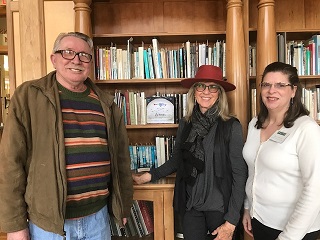
“Among the more than 1,000 submissions we had last year, some came from Italy, England, and France, and we published those,” Rogers explains. “The power of the Internet has helped spread the word about the quality.”
Fittingly, the two featured writers and artists in Artemis XXVI are distinguished Hollins alumnae: Natasha Trethewey M.A. ‘91, Pulitzer Prize winner and former U.S. Poet Laureate, and Sally Mann ’74, M.A. ’75, who was named “America’s Best Photographer” by Time magazine.
“Natasha – you just can’t get much better that that. And what can we say about Sally other than ‘Wow,’” Rogers states. “They both have dealt with being Southern artists and writers, and I think they both really tie into that Southern Gothic scene. Natasha’s poem in the new edition of Artemis addresses racism and is called “Reach.” Sally said she’d be honored to be paired with Natasha, and the image of hers that we’re considering is so good, we think it’s cover-worthy.”
While Rogers acknowledges that she’s “not going to be around forever” as editor of Artemis, she clearly relishes the achievement each edition represents and considers last year’s issue to be her proudest moment. At the same time, she is quick to praise the many volunteers that have supported the journal over the years, noting that “it literally takes a village to sustain the energy needed for Artemis.” Two of the key players along with Rogers since the beginning who continue to play vital roles today are literary editor Maurice Ferguson and design editor Virginia Lepley. Rogers also cites organizations such as the Taubman, which provides space for the annual issue launch free of charge, and the Roanoke Arts Commission, whose grants have given Artemis crucial financial support.
“When you start something, it’s probably going to work out if you have good intentions,” Rogers concludes. “If it’s egotistically motivated, it’s going to have some problems. It won’t last. All along, during the history of Artemis, there have been people who get on board, are so dedicated to the arts, and want to keep this thing going. I think that’s why we’ve existed as long as we have.”
Top Image: The artwork for the cover of Artemis‘ 2015 issue, created by Hollins Professor of Art Emeritus Bill White.



